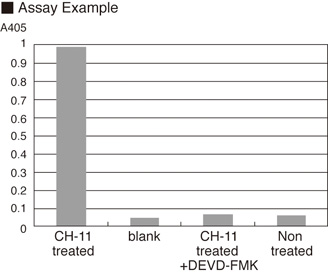APOPCYTO Caspase-3 Colorimetric Assay Kit
Storage:
-20°C. Please refer to datasheet for additional information
1 / 2

2 / 2

No additional charges, what you see is what you pay! *
Stay in control of your spending. These prices have no additional charges, not even shipping!
* Rare exceptions are clearly labelled (only 0.14% of items!).
Multibuy discounts available!
Contact us to find what you can save.
This product comes from:
United States.
Typical lead time:
10-14 working days.
Contact us for more accurate information.
- Further Information
- Documents
- References
- Show All
References
1). Adachi M, et al., Clin Cancer Res, 10, 3853 (2004)
2). Brigotti M, et al., Infect Immun, 75, 2201 (2007)
3). Dinnen RD, et al., J Biol Chem, 282, 26675 (2007)
4). Goga Y, et al., J Dent Res, 85, 240 (2006)
5). Ishii T, et al., Cancer Res, 65, 203 (2005)
6). Madsen-Bouterse SA, et al., Endocrinology, 147, 3826 (2006)
7). Min Y, et al., Gut, 54, 591 (2005)
8). Nozaki N, et al., Circulation, 110, 2869 (2004)
9). Numata K, et al., J Immunol, 178, 3777 (2007)
10). Sinicrope FA, et al., Clin Cancer Res, 10, 8284 (2004)




